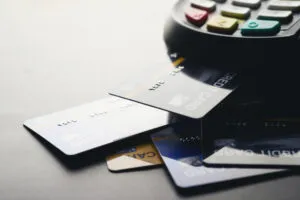Is a HELOC Still a Smart Move in Today’s Economy?
The HELOC is a well-established financial strategy in America, but with so much going on nowadays, it’s important to think more.
Does HELOC Still Make Sense in Today’s America?
With a real estate market becoming increasingly volatile and fluctuating interest rates, is it still worth taking out a Home Equity Line of Credit, the famous HELOC?
For years, HELOCs were considered one of the smartest ways to access credit at relatively low rates, leveraging the equity built up in your home.

But in 2025, the economic landscape has shifted, requiring a more careful assessment of the risks and benefits of this strategy.
What Is a HELOC?
A HELOC is a revolving line of credit that uses your home equity as collateral, somewhat similar to a credit card.
However, it offers a pre-approved limit and significantly lower interest rates compared to traditional credit cards.
In the U.S., HELOCs are popular among homeowners looking to finance renovations, consolidate high-interest debts, or even establish an emergency fund.
Why Was HELOC So Popular?
During the years of low-interest rates, especially between 2012 and 2021, HELOCs became an attractive financial tool.
With rates ranging from 3% to 5%, it was common for consumers to use HELOCs to pay off credit card debts (which hovered around 18% to 25%) or fund large projects without resorting to more expensive personal loans.
However, the conditions that favored HELOCs started to change with rising inflation, interest rate hikes by the Federal Reserve, and a housing market that, despite its appreciation, shows signs of slowing down.
HELOC Challenges in 2025
- Higher Interest Rates: Average HELOC rates, once appealing, can now exceed 8% or 9%, depending on the borrower’s profile and the lender. This significantly reduces the advantage over other types of credit, making it essential to calculate whether the actual cost is worth the risk.
- Volatile Real Estate Market: While many regions are still seeing appreciation, others are experiencing corrections. This means your home’s value may no longer be as solid as collateral, and banks are becoming stricter in approving credit limits.
- Risk of over-borrowing: Since it’s a revolving line of credit, consumers often fall into the trap of using the HELOC repeatedly without a solid repayment plan. With higher rates, this behavior can lead to a snowball effect, increasing debt levels.
- Economic uncertainties: In a climate where recession and inflation are recurring concerns, taking out a loan backed by your home equity requires caution. Job market instability and rising living costs make pledging your home as collateral riskier.
When Is HELOC Still a Smart Strategy?
- Using a HELOC for structural improvements or home upgrades can yield returns by increasing the property’s market value.
- Even with higher rates compared to previous years, HELOCs can still be advantageous for paying off credit card debts or personal loans with interest rates exceeding 20%.
- Some consumers choose to open a HELOC and keep the line as an emergency backup, not using it immediately but ensuring quick access to funds if necessary.
What to Consider Before Taking Out a HELOC
Variable Interest Rate Scenario
HELOCs typically have variable interest rates, meaning the cost of credit can rise with market changes. Assess whether your income can handle potential payment increases throughout the term.
Total Cost (APR – Annual Percentage Rate)
Don’t just look at the nominal interest rate. It’s essential to calculate the APR, which includes administrative fees, property appraisal costs, and other charges embedded in the contract.
Clear Repayment Plan
Having a well-defined payment schedule is crucial. A common mistake is paying only the minimum amount during the draw period, accumulating a large balance that must later be paid off at higher rates.
Personal Financial Stability
Before leveraging your home’s equity, have a clear understanding of your income stability and ability to meet payments under different economic scenarios.
Alternatives to HELOC
- Fixed-Rate Personal Loans: Although typically with higher rates, they offer payment predictability, which can be beneficial for many.
- Mortgage Refinancing: This could be a good option for homeowners with old high-rate mortgages, as it allows replacing the existing mortgage with a new one while cashing out part of the equity.
- Unsecured Personal Lines of Credit: These carry less risk for the home, though they come with stricter limits and higher rates, which can still fit better into personal financial management.






